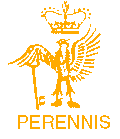Founded 1980
Chair:
Secretary:
Treasurer:
Graham Smith
Jan Thompson
Graham Mumby-Croft
Issue No. 80 Spring 2019
COMPUTER CORNER
In the early days of online computer scams life seemed quite simple because the majority of scams were emails, often originating in countries such as Nigeria, and usually offering easy money for lodging large amounts of cash in your bank account. Of course, the scam was if you gave your bank account details you were far more likely to find your own money going out rather than vast riches coming in. The giveaway of these emails was that the offer was simply too good to be true and that the email was often written in very poor English with appalling grammar and syntax. However, we all know stories of someone who fell for the scam, lost money they could ill afford, and in the process learned a valuable, but an expensive lesson in safety on the internet.
Unfortunately scams have become much more sophisticated, and the people who perpetrate them are now often professional criminals, either expert in computers, or working with someone who is, and as a consequence the range and sophistication of scams has improved to a level where criminals are often able to replicate genuine websites and to generate email addresses that are almost identical to real ones.
So, for example, you may receive an email that looks as if it from your bank, it is addressed to you personally and the sending email address seems to be genuine. This often is sufficient to fool the majority of people into responding, and unfortunately on occasions giving over bank account details which allow the thieves (because it is a scam) to access the account, and to extract money. Many banks are now taking a harder line in cases where the account holder has willingly given account details allowing access to their account, and in a number of cases have refused to refund any amount lost.
So it is worth remembering that in general scams have two main aims. They are to either get you to pass over your bank details so that they can access your account directly, or they aim to try to get you to click on a link, which by doing so usually then downloads a piece of malicious software (MALWARE) to your computer that will then infect your computer with something nasty that in one way or another is seeking to extract money from you.
In order to protect you the National Cyber Security Centre, (which is part of GCHQ) has issued guidance on its website which can be accessed by copying and pasting this link into your browser www.snipca.com/30083 You can also visit the website HaveIBeenPawned? at https://haveibeenpwned.com. This site will tell you if your email address, and therefore potentially some of your personal details, have been included in any known cases of hacking. You may have read of cases wherein security breaches, such as with TalkTalk, tens of thousands of account details were hacked (stolen). Some security breaches are bigger than others, such as the one at Yahoo where millions of account details were breached. So do not be surprised when you go onto the HaveIBeenPawned site to find that your details have indeed been part of a leak from somewhere.
In this case, the action to take is to change your passwords on everything that you use. Remember there are a number of free password generators that can be very helpful in a situation like this. One of the best is LASTPASS. These help to generate completely random and unbreakable passwords. As an aside you may not be aware that every year security companies publish the list of top ten passwords used by people to log into the internet or other online services, and every year the most commonly used are: 123456, or Password, followed by qwerty, (first 6 keys on the top line of a keyboard). Other common passwords are people's own name or a pets name. Unfortunately, passwords such as these take only seconds to break using sophisticated computer software, whereas a randomly generated password of 10 characters can take millions of computer hours to break even using sophisticated software. The reality is that criminals will always look for the easy codes to break simply because they take less time and effort.
As an additional line of defence, many sites offer the option of what is known as “Two Factor Authentication”. What this does is add an extra element into the login process which involves the site you are logging into sending an authentication code to your mobile phone. You then enter this code into the site as the final element to gain access. In this way even if your password or computer has been compromised, unauthorised access cannot be gained. This is well worth using, especially on banking sites.
One of the major problems with trying to keep secure is the fact that criminals -- and let us not forget that some of these scams are encouraged and funded by foreign governments – are always looking at new ways to infiltrate people's systems in order to commit crime. As more and more people live their lives through their smartphone, so the criminals have turned their gaze in that direction and, as a consequence, there has been a sharp rise in the number of cases of scams directed at smartphone users, mostly through scam telephone calls but some in messages or emails. There are also an increasing number of cases of some smartphone applications being infected with viruses. So my advice is to be aware at all times, and if you are not sure if something is genuine, then most likely it is not to ignore it and delete it. With regard to smartphone applications, the advice is to only ever download them from the Google Play Store, for Android phones, or the Apple Store for iPhones.
I have to admit that I am a great fan of the BBC website and have the BBC News website set as my Home Page whenever I log in to the internet. If you have never used the site, or if you do use it but have never really explored all that is available I can thoroughly recommend that you spend some time and see what it has to offer. If you sign up to an account with the BBC, which is absolutely free, then you have the option of being able to personalise your home page to carry the sort of items that are of interest to you, as well as being able to localise your news to include what is current in your area, and details on local weather.
The site does use cookies, (these are small bits of computer code that allows websites to load more quickly and to remember your preferences) but these are not obtrusive, and of course, there are no adverts. The site also gives you access to both the BBC iPlayer where there are literally hundreds of hours of television programmes available (very handy if you have missed something) and the new SOUNDS application which does the same thing for radio. I spend hours listening to radio programmes that I have missed, especially comedy programmes on Radio 4.
To find the BBC Home site simply type bbc.co.uk into your search facility and then clicking on BBC-Home. Across the top, you will find a number of TABS that include the iPlayer and SOUNDS. Just click away to look around the site as you have no need to fear that you may click on anything that will either download any unwanted junk or try to charge you money.
Are you baffled by the jargon of computers? If so here are a few explanations that you may, (or may not) find useful or at least enlightening:
32 bit/64 bit This is a measure of how much data a computers processor unit can handle based on access to physical memory. Most older computers are 32bit and modern ones, less than 10 -years old are 64bit. The good news is that 32bit optimised software will run on a 64bit machine and 64bit software will run on a 32bit machine, albeit slightly slower.
USB 2.0/3.0 /3.1 USB stands for Universal Series Bus and simply means a standardised system for computers to connect to peripheral items such as keyboards, mice and external drives like a CD. The standards for USB are controlled by an International body to ensure that USB is the same from any source, anywhere in the world. The main difference in the numbers relates to the speed at which they can transfer data. The original USB 1 has been superseded now but transferred data at the rate of 12mb/sec. The latest USB 3.1 transfers data at the rate of 10gb/sec or almost 1000 times faster. You may not be aware but USB is colour coded inside the connection with USB 1 being white, USB 2 black and USB 3 blue. USB also delivers power as well as data.
USB A/B/C This refers to the type of connection on the end of the lead. USB/A is the standard oblong connection at your computer. USB/B is the smaller square type of connection, usually used on printers and other peripherals, although this is now almost redundant. USB/C is the latest micro connection and connects to and charges items such as mobile phones and tablets. Many newer laptop computers come with at least 1 USB/C port.
Wi -Fi Contrary to popular belief Wi-Fi does not stand for Wireless Fidelity but is actually a trademark name for the Wi-Fi Alliance, which is the organisation that oversees the standardisation of the system and compliance with Institute of Electrical and Electronic Engineers (IEEE) regulations. The current IEEE standard is 802.11ac so if you are looking for any item of Wi-Fi equipment then this is the compliance standard to look for in order to achieve the best speeds and quality.
SD Cards Secure Digital cards are Memory Cards that fit into portable items such as cameras, phones and Tablets to provide memory storage function. They come in a range of sizes of Standard, Mini and Micro, and a range of capacities and data transfer rates. They also come as SDHC/SDXC/SDUC depending on their capacity.
CPU Central Processor Unit. This is the computer chip at the heart of any computer that does the actual work of carrying out the calculations that make a computer work.
Codec Stands for Compressor/Decompressor and is a piece of computer code that tells the computer how to record and play different types of media (usually music or video).
GRAHAM MUMBY-CROFT
Graham Mumby-Croft


